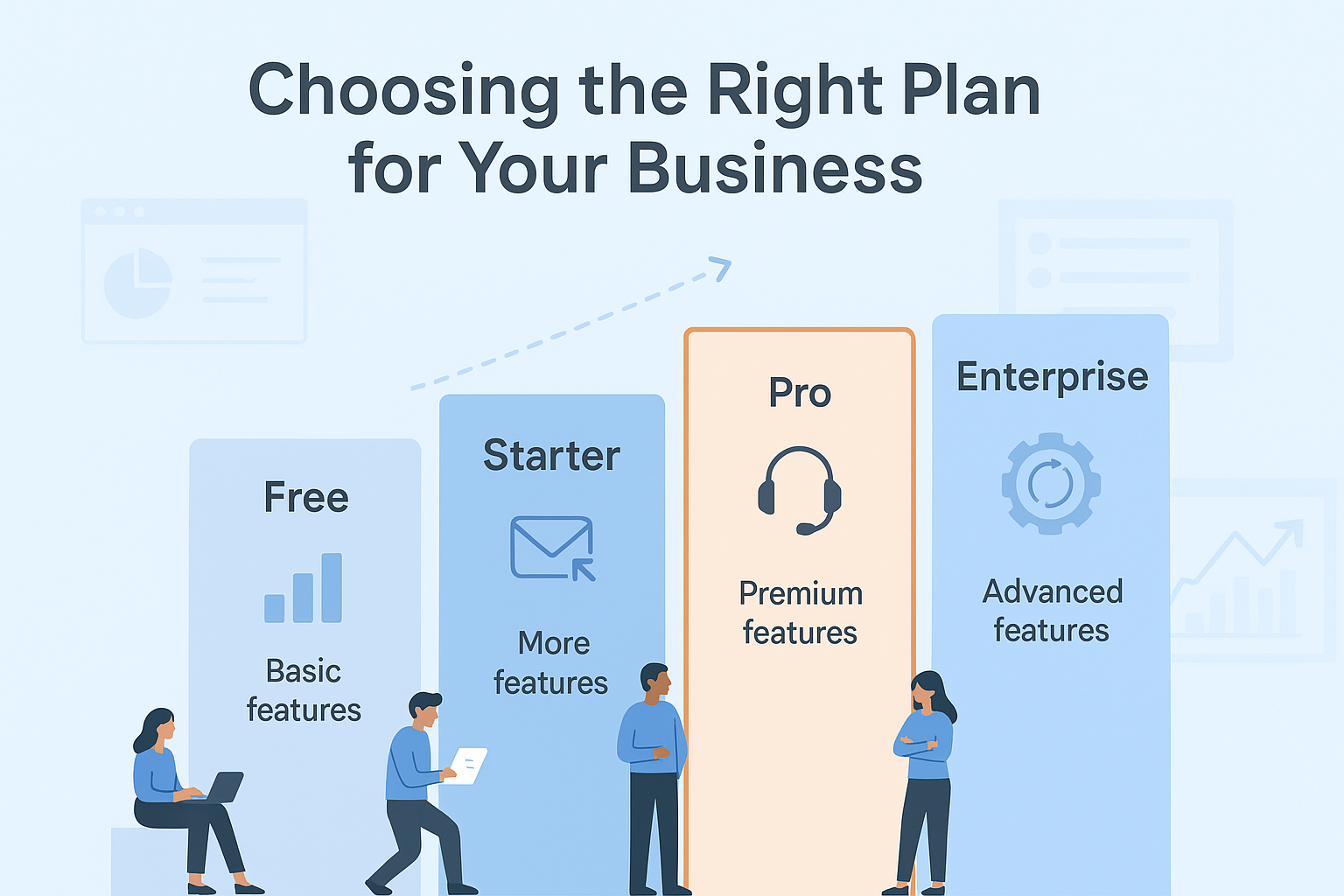Blog Details
- Home
- Blog Details

How to choose the right HubSpot plan for your business?
Choosing the right HubSpot plan can feel overwhelming, especially with the platform’s tiered structure, multiple hubs, seat types, and hidden pricing nuances. From Starter to Enterprise, each plan has a different set of features, limitations, and pricing models. The key is understanding your team’s needs, your business strategy, and the long-term scalability requirements. This guide will walk you through the critical factors to consider when selecting a HubSpot plan.
1. Understand HubSpot’s Tiered Structure
HubSpot offers a tiered system:
-
Free: Ideal for individuals or very small teams. Offers basic CRM functionality such as contact and company management, deal tracking, and limited reporting.
-
Starter: Entry-level paid plan. Adds simple marketing automation, email campaigns, and limited forms. Great for small teams looking to get started but lacks advanced reporting and social tools.
-
Pro: Designed for growing teams. Includes advanced marketing automation, campaign reporting, A/B testing, social media management, custom reporting, and multi-user access.
-
Enterprise: Tailored for scaling organizations. Unlocks advanced features like AI tools, custom objects, workflows at scale, brand domains, and multi-team management. Enterprise features are often only relevant to larger teams.
Key insight: The jump from Starter to Pro is significant—not just in cost, but in functionality. It’s essential to evaluate not only the features you get now but what you’ll need as your business grows.
2. Know Your Seat Types
HubSpot uses different seat types, which determine what access each user has:
-
Core seats: Basic access, often for admins or view-only roles.
-
Sales seats: Access to Sales Hub features.
-
Service seats: Access to Service Hub features.
Even super admins may not see all features unless they have the correct seat type. Understanding which seats your team requires prevents confusion and ensures everyone has the access they need without overspending.
3. Evaluate Feature Relevance
Each tier includes certain features that may or may not be relevant to your team:
| Feature | Starter | Pro | Enterprise |
|---|---|---|---|
| Campaign reporting | ❌ | ✅ | ✅ |
| Social media management | ❌ | ✅ | ✅ |
| A/B testing | ❌ | ✅ | ✅ |
| AI-powered tools | ❌ | Limited | ✅ |
| Custom objects | ❌ | ✅ | Advanced |
| Multi-team management | ❌ | Limited | ✅ |
| Marketing automation | Basic | Advanced | Advanced |
Tip: Don’t buy features that you won’t use immediately. Focus on functionality that aligns with your current strategy while keeping future growth in mind.
4. Watch Out for Common Pricing Pitfalls
Even with HubSpot’s transparent pricing, there are areas where costs can escalate unexpectedly:
-
Over-purchasing seats or bundles – Only buy what you need. Extra seats or hubs can inflate costs unnecessarily.
-
Ignoring marketing contact limits – Importing extra contacts can significantly increase your monthly bill.
-
Assuming free features are enough – Starter may not cover essential capabilities like campaign reporting or social tools.
-
Not understanding add-ons – Some capabilities, like AI credits or event tracking, are add-ons and can add costs if overlooked.
5. Use HubSpot’s Pricing Tools Wisely
-
Pricing calculator: HubSpot’s official calculator is one of the most transparent in SaaS, allowing you to see how seat numbers and marketing contacts affect pricing.
-
Legal product catalog: Offers detailed explanations of add-ons and limits, though it’s not always beginner-friendly.
Pro Tip: Combine these tools with internal strategy discussions. Gather your sales, marketing, and operations teams to map out what features each department truly needs.
6. Seek Advice from Experienced Users
Before committing to a plan:
-
Talk to existing HubSpot users to understand what they wish they had purchased or avoided.
-
Engage in the HubSpot community (LinkedIn, forums, partner network) to get real-world insights.
-
Don’t rely solely on sales reps; they may focus on features that justify upgrades.
7. Align Plan Choice with Strategy, Not Price
The real starting point isn’t the price—it’s your strategy:
-
Identify your business goals: What problems are you solving with HubSpot?
-
Define success metrics: What does success look like six months or a year from now?
-
Map features to teams: Ensure every user has the features they need without paying for unnecessary functionality.
Remember: HubSpot’s strength lies in its ability to grow with you. You can start small and scale as your team and processes expand.
8. Final Recommendations
-
Starter: Best for small teams testing the platform or needing basic automation.
-
Pro: Ideal for growing teams needing full marketing and sales functionality.
-
Enterprise: Designed for large, scaling organizations with complex workflows and multiple teams.
-
Always audit seats and add-ons to prevent overspending.
-
Leverage the HubSpot community to make informed decisions.
Choosing the right HubSpot plan is about balancing current needs, future growth, and budget. By understanding tiers, seats, features, and pricing nuances, you can pick a plan that maximizes value while minimizing unnecessary costs.

Peopel Comments